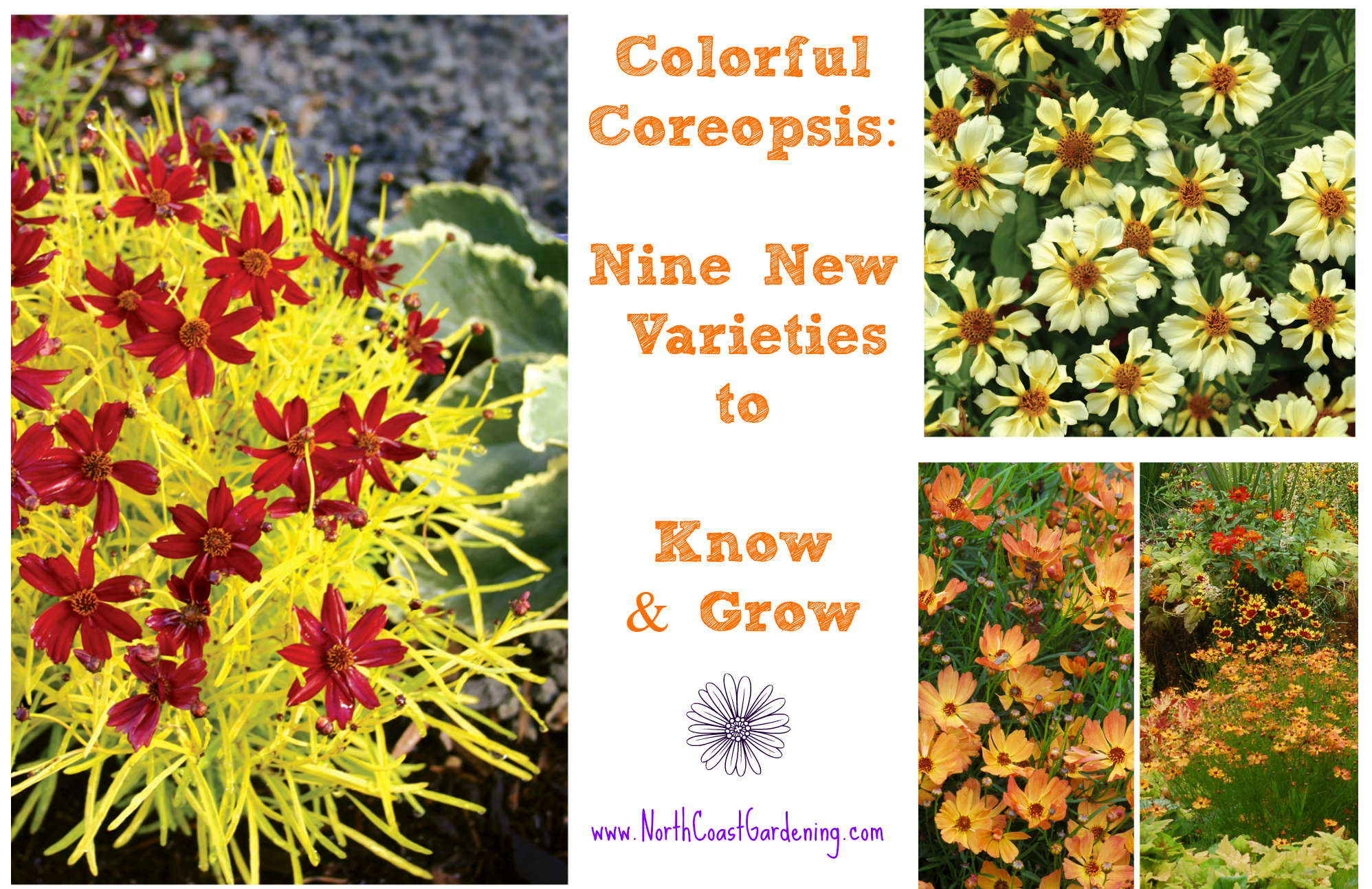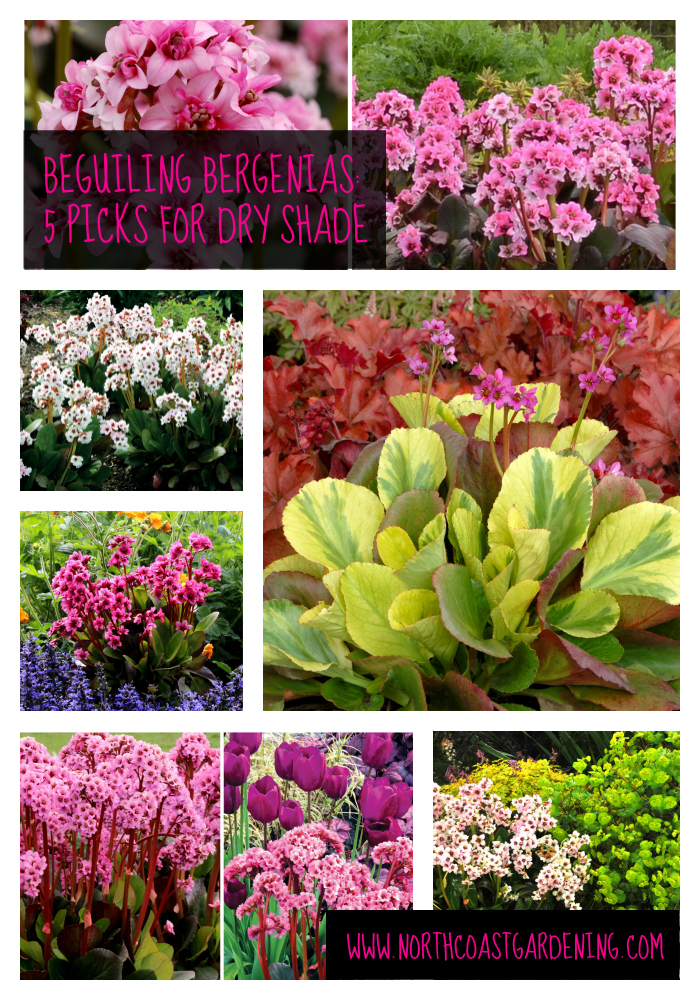-
The Many Faces of Coreopsis: New Varieties to Love

Coreopsis is a staple of the traditional flower garden because it’s long-blooming, easy to grow, and the profuse little daisy-like flowers can cheer up anyone if they’re having a bad day. Yet most people haven’t looked beyond the old-school varieties to learn about the wide array of colors available in this favorite, adaptable plant. These…
-
Beguiling Bergenias: 5 Varieties for Dry Shade

While many gardeners find shade challenging enough, add in dry soil and deer, and the list of plants which will perform gets shorter and shorter. Yet Bergenia, an unassuming perennial with leathery evergreen leaves, does admirably under all of these conditions. Though you may have grown Bergenia in the past and been unimpressed by its tendency…
-
Color Echoes: Variegated Dwarf Weigela and Clifford Moor Red Catchfly
These two plants are easy to grow and take little care to look their best. Variegated Dwarf Weigela, Weigela florida ‘Variegata Nana’, is a sturdy shrub to about 4′ tall and wide. It loses its leaves in winter, but comes back with fresh growth and masses of flowers each spring. Clifford Moor Red Catchfly, Silene…
-
Plants to Love: Gaultheria mucronata or Prickly Heath
Like the barely-fragrant Stinking Hellebore, Gaultheria (formerly Pernettya) mucronata has been given a somewhat undeserved and unfortunate common name, probably by some delicate-skinned maiden who’d never heard of gardening gloves.
-
Plants to Love: Rainbow Drooping Leucothoe (Leucothoe fontanesiana ‘Rainbow’)
I know you’re wondering, so let’s get this out of the way: it’s loo-kow-thow-ee. You only have to say the name once though, when you’re looking for it at the nursery, and then you can call it anything you like. “That gorgeous variegated thing” is what most people call it. Andrew of Garden Smackdown suggests…
-
Plants to Love: Snowmound Spirea (Spirea x nipponica ‘Snowmound’)
‘Snowmound’ Spirea (USDA Zones 4-9) is a lovely thing, with deep green leaves, reddish stems, a graceful arching habit and rounded form. It loses its leaves, but doesn’t make a mess about it, and the white flowers in spring make you forget that you missed it all winter. ‘ Snowmound’ needs full sun to do…
-
Plants to Love: New Zealand Wind Grass (Stipa arundinacea/ Anemanthele lessoniana)
New Zealand Wind Grass is a stunning low-maintenance grass that keeps its glowing orange foliage all winter long. I occasionally have to prune out some dead bits here or there, which I do by grasping a small clump of dead foliage and cutting it out at the base so you don’t notice it’s been pruned.…
-
Plants to Love: Rozanne Hardy Cranesbill (Geranium ‘Rozanne’)
Geranium ‘Rozanne’ (USDA Zones 4/5-9) is a lovely tumbling plant that gets between 4 and 5’ around, and about 2’ tall. She’s been the darling of the landscape designer crowd since being introduced a few years back, and even though we all plant her all the time, we’re sticking our fingers in our ears and…
-
Plants to Love: Neon Flash Spirea (Spirea ‘Neon Flash’)
Spirea ‘Neon Flash’ (USDA Zones 4-9) is a Bright! Magenta! Pink! flowering shrub to about 4’ tall, which loves full sun and blooms off and on throughout the summer. It does lose its leaves in winter and gets a bit of reddish-yellow fall color, but the fall color isn’t anything to rave about. I love…
-
Plants to Love: White Parahebe (Parahebe linifolia)
White Parahebe (USDA Zones 8-11) deserves to be one of those plants like Geranium ‘Rozanne’; a plant that’s totally overused but nobody’s actually sick of because it is so ridiculously charming. It has deep green, glossy foliage that’s evergreen and very attractive, its delicate white blooms are lacy yet sturdy and incredibly profuse – and…
-
Plants to Love: Purple Pixie Hebe (Hebe ‘Mohawk’ or ‘Purple Pixie’)
This Hebe is a lovely little evergreen thing which gets to about 3’ around and blooms off and on a good part of the year. It takes shearing well and usually comes back well from hard pruning during the growing season, though I try to avoid pruning into the wood if I can avoid it.